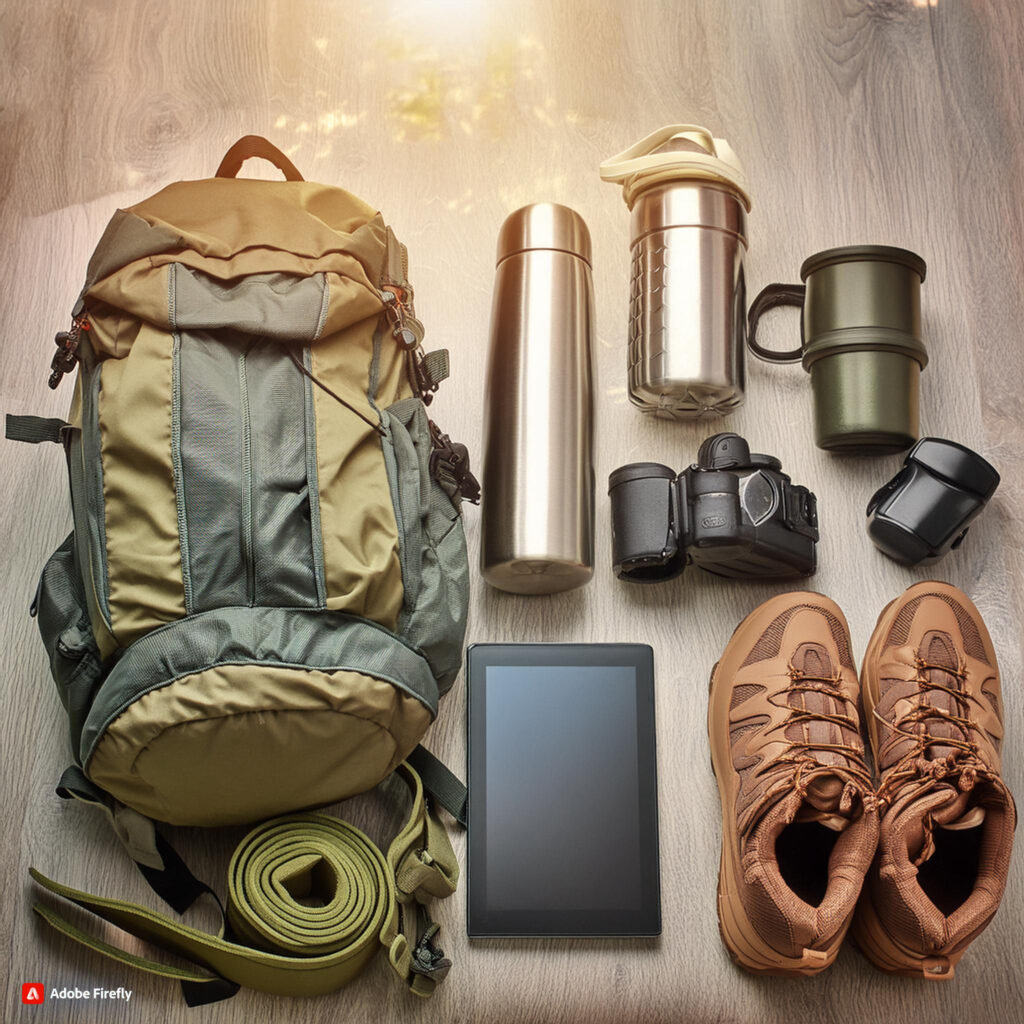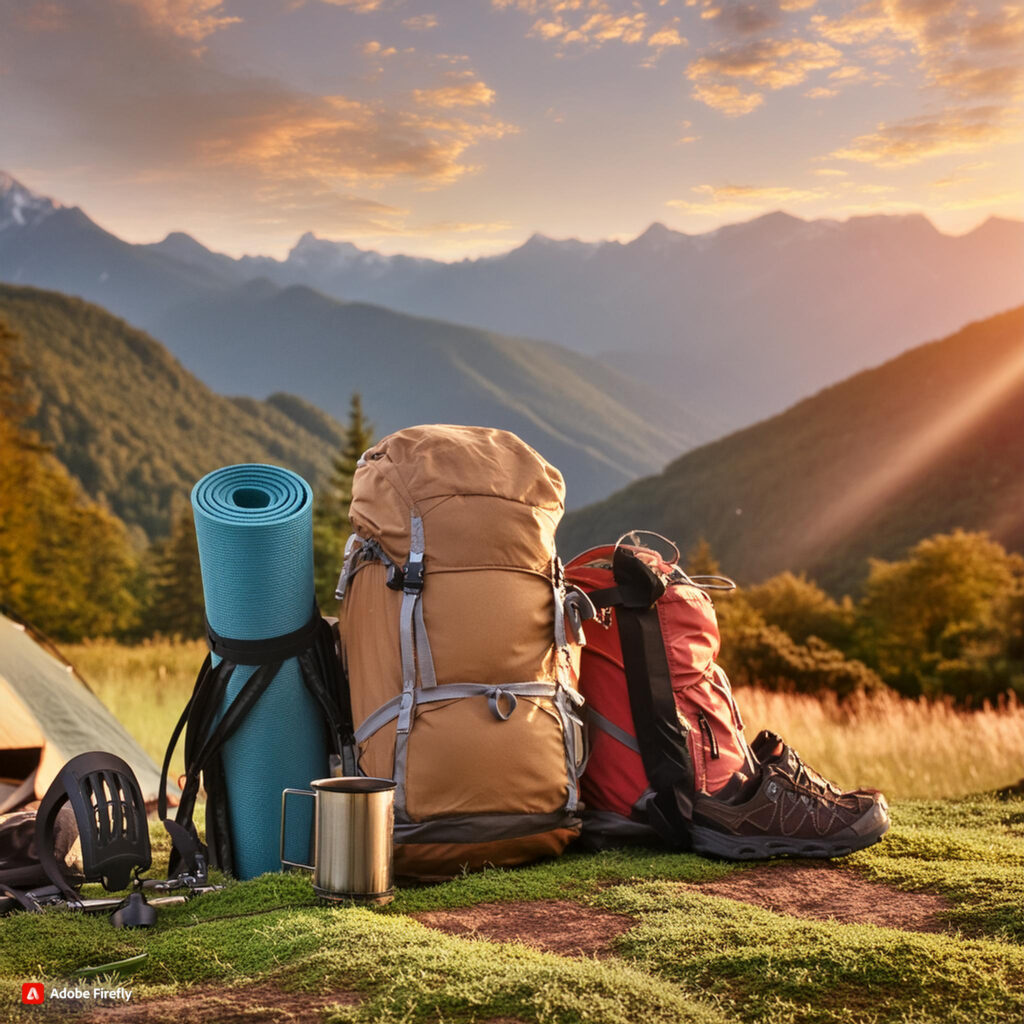Embarking on your first hiking adventure can be exciting, but it can also be daunting if you’re not properly equipped. Having the right hiking gears for beginners is essential to ensure a safe and enjoyable experience on the trails. This comprehensive guide will walk you through everything you need to know about hiking gears for beginners, from essential items to choosing the right equipment. Let’s dive in!
Why Hiking Gear Matters
Proper hiking gears for beginners not only enhances your comfort but also ensures your safety on the trail. It can protect you from harsh weather conditions, prevent injuries, and help you navigate the wilderness effectively. As a beginner, investing in the right gear is a crucial step toward a successful hiking experience.
The 10 Essentials for Hiking
Before we delve into specific gear recommendations, it’s important to familiarize yourself with the 10 essentials for hiking. These are the fundamental items that every hiker should carry to ensure safety and preparedness.
- Navigation: Map, compass, and GPS device.
- Sun Protection: Sunglasses, sunscreen, and hat.
- Insulation: Extra clothing for varying weather conditions.
- Illumination: Headlamp or flashlight with extra batteries.
- First Aid Supplies: Basic first aid kit tailored to your needs.
- Fire: Lighter, matches, and fire starters.
- Repair Kit and Tools: Multi-tool or knife, duct tape.
- Nutrition: Extra food beyond the minimum requirement.
- Hydration: Extra water and a way to purify it.
- Emergency Shelter: Tent, space blanket, or bivy sack.
These essentials form the foundation of your hiking equipment list and are critical for safety and survival in the wilderness.

Hiking Shoes
One of the most important pieces of hiking gears for beginners is a good pair of hiking shoes. Your footwear can make or break your hiking experience, so it’s crucial to choose wisely.
Choosing the Right Hiking Shoes
- Fit: Ensure your hiking shoes fit well and provide adequate support. They should be snug but not tight, with enough room to wiggle your toes.
- Type: Choose between hiking boots, trail runners, or hiking shoes based on the terrain and your preference. Boots offer more ankle support, while trail runners are lighter and more flexible.
- Material: Look for durable materials that provide good traction and water resistance. Gore-Tex and other waterproof membranes can keep your feet dry in wet conditions.
- Comfort: Prioritize comfort. Break in your hiking shoes before hitting the trail to avoid blisters and discomfort.
Clothing: Dressing for Success
Proper clothing is essential for regulating your body temperature and protecting you from the elements. Here’s a breakdown of what you need:
Base Layer
The base layer is the clothing next to your skin. Its primary function is to wick moisture away from your body to keep you dry.
- Materials: Opt for moisture-wicking materials like merino wool or synthetic fabrics. Avoid cotton, as it retains moisture and can cause chafing.
- Types: Base layers come in different weights (lightweight, midweight, heavyweight) to suit different weather conditions.
Mid Layer
The mid layer provides insulation to keep you warm.
- Materials: Fleece, down, or synthetic insulation.
- Types: Jackets, vests, and pullovers.
Outer Layer
The outer layer, or shell, protects you from wind, rain, and snow.
- Materials: Waterproof and breathable materials like Gore-Tex.
- Types: Hardshell jackets, softshell jackets, and rain jackets.
Additional Clothing
- Hiking Pants: Lightweight, quick-drying pants are ideal for hiking. Convertible pants that can be turned into shorts are versatile options.
- Hiking Socks: Wear moisture-wicking socks made from wool or synthetic materials to prevent blisters and keep your feet dry.
- Hat and Gloves: A hat for sun protection and gloves for cold weather.
Backpacks: Carrying Your Gear
A good backpack is essential for carrying your gear comfortably. Here’s what to consider when choosing a backpack:
Size and Capacity
- Daypacks: For short hikes, a daypack with a capacity of 20-35 liters is sufficient.
- Overnight Packs: For multi-day hikes, consider a backpack with a capacity of 50 liters or more.
Fit and Comfort
- Fit: The backpack should fit your torso length and have adjustable straps for a snug fit.
- Comfort: Look for padded shoulder straps, a hip belt, and a ventilated back panel for added comfort.
Features
- Compartments: Multiple compartments and pockets help organize your gear.
- Hydration System: A hydration reservoir sleeve or external water bottle pockets are useful for staying hydrated.
- Rain Cover: An integrated rain cover protects your gear from rain.
Men’s Hiking Gears for Beginners
When it comes to men’s hiking gears for Beinners, the essentials remain the same, but there are some considerations specific to men’s needs and preferences.
Footwear
Men’s hiking shoes and boots are designed to provide support and durability for larger frames and heavier loads.
Clothing
Men’s hiking clothing is tailored to fit broader shoulders and longer torsos, ensuring a comfortable fit.
- Base Layer: Look for moisture-wicking and quick-drying materials.
- Mid Layer: Fleece jackets or synthetic insulated jackets for warmth.
- Outer Layer: Waterproof and windproof jackets.
Accessories
- Hats: Wide-brim hats for sun protection.
- Gloves: Insulated gloves for cold weather hikes.

Best Hiking Gears for Beginners
Here’s a list of the best hiking gears for beginners to get you started:
Footwear
- Hiking Boots: Salomon X Ultra 3 Mid GTX.
- Trail Runners: Altra Lone Peak 5.
- Hiking Shoes: Merrell Moab 2 Ventilator.
Clothing
- Base Layer: Icebreaker Merino 150.
- Mid Layer: Patagonia R1 Fleece.
- Outer Layer: Arc’teryx Beta AR Jacket.
- Hiking Pants: Columbia Silver Ridge Convertible Pants.
- Socks: Darn Tough Hiker Micro Crew Socks.
Backpacks
- Daypack: Osprey Talon 22.
- Overnight Pack: Osprey Atmos AG 65.
Additional Gear
- Trekking Poles: Black Diamond Trail Ergo Cork.
- Headlamp: Petzl Actik Core.
- First Aid Kit: Adventure Medical Kits Ultralight/Watertight .7.
- Navigation: Garmin eTrex 22x.
Hiking Equipment List
Here’s a comprehensive hiking equipment list to ensure you’re fully prepared for your adventure:
Navigation
- Map
- Compass
- GPS device
Sun Protection
- Sunglasses
- Sunscreen
- Hat
Insulation
- Extra clothing
- Warm layers
Illumination
- Headlamp or flashlight
- Extra batteries
First Aid Supplies
- Basic first aid kit
Fire
- Lighter
- Matches
- Fire starters
Repair Kit and Tools
- Multi-tool or knife
- Duct tape
Nutrition
- Extra food
Hydration
- Extra water
- Water purification method
Emergency Shelter
- Tent
- Space blanket
- Bivy sack

FAQs About Hiking Gears for Beginners
What is the basic equipment for hiking?
The basic equipment for hiking includes a good pair of hiking shoes, a backpack, appropriate clothing, navigation tools, sun protection, extra food and water, a first aid kit, fire-starting materials, a repair kit, and emergency shelter.
What are the 3 basic skills in hiking?
The three basic skills in hiking are:
- Navigation: Using a map, compass, and GPS to find your way.
- First Aid: Basic first aid knowledge to handle minor injuries.
- Leave No Trace: Practicing environmental stewardship to minimize your impact on nature.
How do I choose hiking gears?
To choose hiking gear, consider the following:
- Fit and Comfort: Ensure the gear fits well and is comfortable.
- Durability: Choose high-quality, durable materials.
- Functionality: Select gear that meets your specific needs and the conditions of your hike.
- Weight: Opt for lightweight gear to reduce the load you carry.
How to start hiking as a hobby?
To start hiking as a hobby:
- Start Small: Begin with short, easy hikes to build your stamina and confidence.
- Join a Group: Hike with friends or join a local hiking group to learn from experienced hikers.
- Research Trails: Use online resources and hiking apps to find trails suited to your skill level.
- Invest in Gear: Purchase essential hiking gears to ensure safety and comfort.
- Learn Skills: Educate yourself on navigation, first aid, and Leave No Trace principles.
Conclusion
Hiking is a fantastic hobby that allows you to connect with nature, stay fit, and explore new places. As a beginner, having the right gear is crucial to ensuring a safe and enjoyable experience on the trails. By following this guide and investing in the essential hiking gears for beginners, you’ll be well-prepared for your adventures. Remember to start small, learn the basics, and gradually take on more challenging hikes. Happy hiking!
